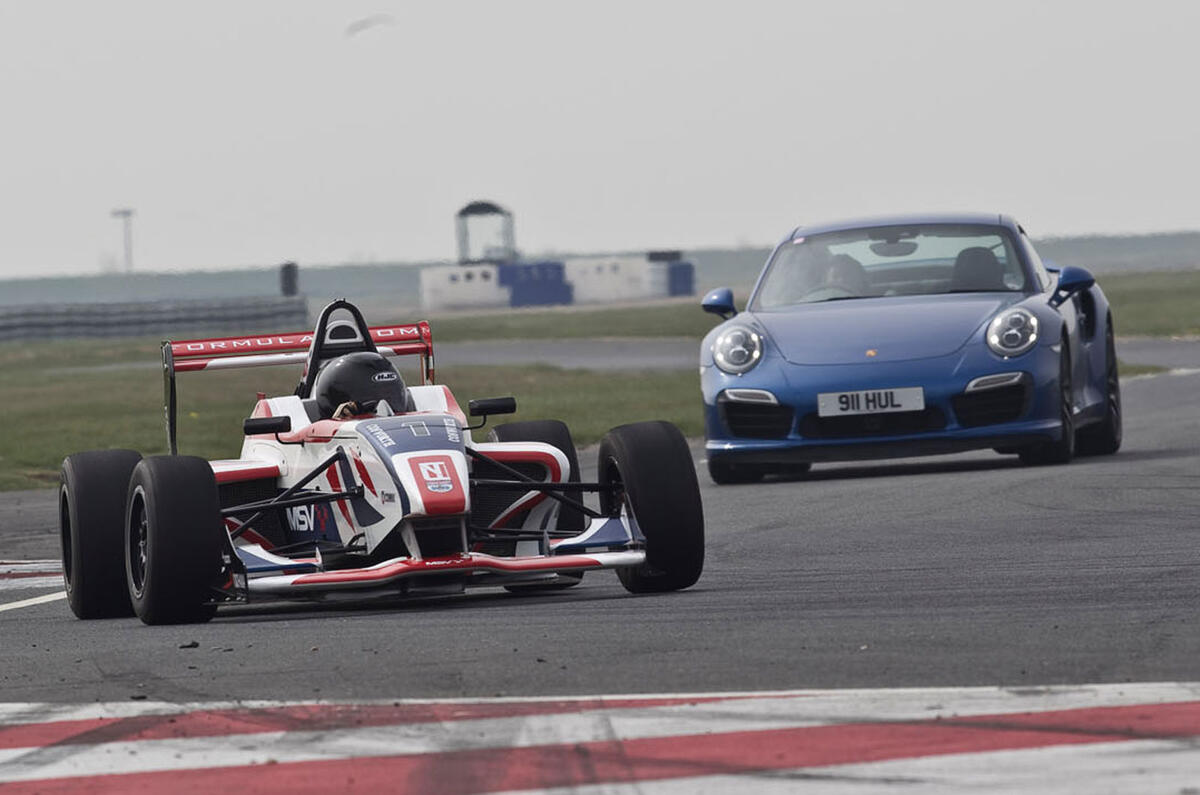The latest Porsche 911 Turbo S is one of the fastest road cars that money can buy.
It has 552bhp and 516lb ft of torque, puts its power all over the road courtesy of a complex four-wheel drive system and can, as a result, cover ground more efficiently than almost any other road car on earth. And it costs £140,852.
For less than a third of that, however, you could arm yourself with a device that could lap any circuit in Britain much faster than a 911 Turbo S. And for half of that again, you could pay to enter said device into a bona fide racing championship and find out if you have what it takes to become the next Lewis Hamilton.
Or, more realistically, find out if your son or daughter has what it takes to become the next you-know-who.
But even if you just fancied running a Formula 4 car at track days every now and then, you’ve got to admit that £45k for a fully tooled-up single-seater that could run rings around anything else that turned up is, in all sorts of ways, a mouth-watering prospect.
But how fast, ultimately, can a single-seater like the new F4 machine be when it has but a mere 185bhp from a 2.0-litre Ford Duratec engine? Fair enough, the spaceframe chassis and part-carbonfibre safety cell of the F4 car mean that it weighs little more than a cup of tea, but surely it can’t compete with the pure grunt of the Porsche on the straight bits of the average circuit?
And even if the F4 can stop rather well, courtesy of its AP Racing brakes, and changes gear instantly, thanks to its trick new Sadev six-speed paddle-shift gearbox, the PDK-equipped 911 Turbo S also has a reputation for being able to swap cogs faster than you can think. It’s quite good at slowing down, too.
So what actually happens when a 552bhp, 1605kg Turbo S squares up to 185bhp and 470kg of Van Diemen-designed Formula 4 car on a circuit? Does the F4 car just disappear into the distance at the first corner, never to be seen again? Or are there areas in which they overlap? Are there parts of the circuit, in other words, where the heavier but far more potent 911 can keep up or even pull away?
We went to the West Circuit at Bedford Autodrome to find the answer, and we chose the West because it has a decent mix of straights, which would in theory favour the 911, and corners, which would suit the F4 car.
Read the Porsche 911 Turbo S first drive
According to fastestlaps.com, the outright road car lap record for the West Circuit is 1min 13.8sec, held by a 455bhp Radical SR8 LM, with the 583bhp Caparo T1 second on 1min 14.8sec. But to give you an idea of what sort of times more normal supercars are capable of, the McLaren 12C is listed at 1min 19.6sec, the 2012 Nissan GT-R 1min 20.1sec and the Noble M600 1min 20.8sec







































Join the debate
Add your comment
Road car are pathetic on tracks.
They are not fast on a track. Really, none of them are. And I really don't know why anyone cares how fast these risable F1 gearshifts are - it makes no difference to anything of consequence.
The only things that a road car can do that is 'cool' is, look good, sound good, and be a rewarding challenge to drive. Everything else in nonsense. (Does anyone seriously buy in to this guff about cars like the FXX - 'buyers will be part of the development team'. Right.)
Road cars are being sent in a bad direction, in substantial part by journalists who encourage or buy in to all this delusion. They are catastrophically slow per £; always have been, always will be.
But they can still be lovely things if judged by the correct criteria. And that is absolutely NOT a lap time of the Nurburgring.
Well I found this
always interested in this stuff
Yep - i find those kind of comparisons fascinating, particularly the historical ones. At the same time it's crazy to witness the march of progress; to think that a Tesla would be quicker than a Ferrari Daytona to 100mph?! Mental.